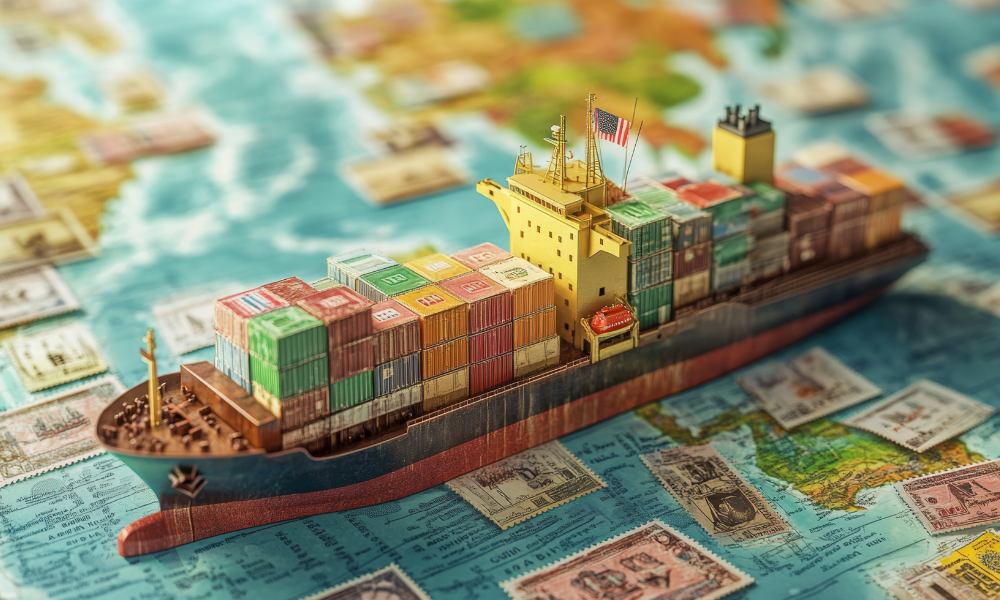Dawn Desjardins sees short downturn likely as tariffs hit but says recovery depends on trade resolution

Canada’s economy faces uncertainty this 2025, according to Deloitte Canada’s latest economic outlook Calm Before the Storm.
Featured in a recent episode of Canada’s Economy, explained by the Canadian Chamber of Commerce, host Marwa Abdou spoke with Dawn Desjardins, chief economist at Deloitte Canada.
Desjardins explained that stabilising factors such as falling interest rates and household savings are supporting the economy.
However, rising risks could still derail progress. Deloitte’s baseline scenario projects 2 percent GDP growth in 2025.
Desjardins, who previously held roles at RBC, Bloomberg, and JP Morgan, noted that “the Bank of Canada is lowering interest rates. Inflation is trending lower. Households have savings.”
According to Deloitte’s modelling, tariffs could cost the average Canadian more than $2,000 annually. If Canada retaliates, GDP could shrink by 0.8 percent.
Deloitte’s downside scenario shows GDP could fall by nearly 3 points—enough to push the country into recession territory. The modelling assumes a potential April 2 implementation date for US tariffs, followed by possible trade negotiations.
In a scenario where a trade agreement is reached within six months, Deloitte projects a milder impact, with growth of around 1 percent by the end of 2025.
Desjardins said, “We’re not expecting a long downturn. If concessions happen — on both sides of the border — Canada could exit 2025 in stronger shape than feared.”
Desjardins pointed to growing unease among households and businesses.
“Consumer confidence has come down significantly. And business confidence is following,” she said, referencing recent data from the Bank of Canada and CFIB. “We’re seeing delays and cancellations in EV investment projects that were just months ago being celebrated.”
According to Deloitte, more than $10bn in EV manufacturing investment is currently on hold.
Desjardins added, “Businesses are saying, maybe not putting too much money to work right now… not looking to add aggressively to their workforce.”
Recent changes to federal immigration policy are also reshaping the labour market.
Desjardins noted the post-pandemic influx of immigrants had helped fill vacant positions, but with permanent residency targets set to drop to 365,000 annually by 2027 and temporary foreign workers expected to fall by 30 percent, labour supply will tighten.
“That’s good for housing demand, but tough for growth and productivity,” Desjardins said.
While tighter labour markets could ease unemployment, they may also drive up wages and strain businesses’ expansion plans.
Desjardins underlined the potential effects of tariffs on Canada’s export-dependent sectors.
While energy exports like oil and potash face lower tariffs, sectors such as auto manufacturing are more vulnerable.
“Our export sector, especially auto manufacturing, is deeply vulnerable,” she said.
She also warned of the broader economic effects, saying “If I’m working in an industry that suddenly there’s not as much demand for cars… maybe I have people who are furloughed. Are they really going to go out for dinner? Are they going to go to the movie theatre? Probably not.”
According to Desjardins, services could also suffer indirectly from reduced spending. “We would anticipate the services sector also feeling pinched from these tariffs,” she said.
In the lead-up to Canada’s federal election, Desjardins highlighted the need for policymakers to address long-standing economic challenges, including productivity and interprovincial trade barriers.
“These are long-standing issues. Maybe now, finally, we act,” she said.
Desjardins noted that federal investment in agencies like EDC could help diversify export markets, but added, “It will require infrastructure… we need to see some money on that front as well.”
She concluded the episode by encouraging decision-makers to adopt a long-term perspective. “Be cautious but stay engaged. Opportunities will emerge from the uncertainty.”


